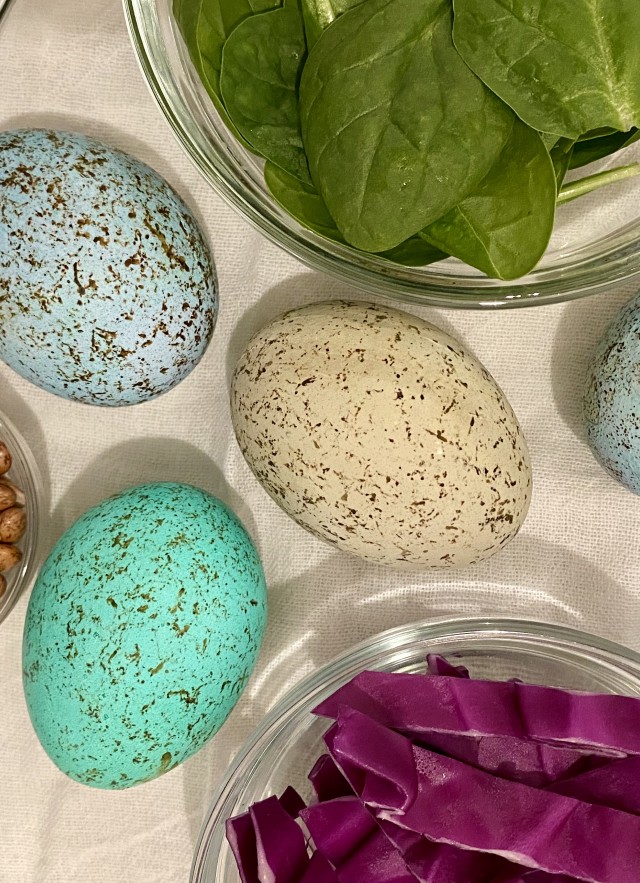
activity | all grades
Dye your own eggs, dinosaur style!

By Emily Baker and Taylor Stephens
Thanks to some special tools, paleontologists have a good idea about what different dinosaur eggs looked like back in the Mesozoic Era. Theropod eggshells could be various shades of blue-green and some (like Deinonychus eggs) even had red-brown speckles on them! Since mother theropods left their nests open and uncovered, how do you think speckles might help the baby dinos inside those eggs?
Using what paleontologists have discovered, we’ll help you to make some dinosaur eggs of your own at home for your breakfast table!
hard-boiled eggs*
1 red cabbage + 1 bunch spinach + 4 Tbsp ground coffee (or Nutella in a pinch)
OR food-safe food coloring
1 quart of water + 1 quart water + 2 cups of water
2 Tbsp + 2 Tbsp white vinegar
2 Large bowls
Tongs or large spoons
Paintbrush
OR ½ cup of rice, beans, lentils, peanuts (any dry pantry good)
If using food dye, adding vinegar to your water mixture, will still help the dye stick to the eggs. Use the above instructions but substitute natural dyes with the following: For blue-green eggs add 4 drops of blue dye and 3 drops of green dye to the vinegar water and dye the eggs for 5 minutes. Just use 1 Tbsp of water and 2 drops of red + 1 drop of green dye for the speckles in step 6.
VOILA! Your very own dino eggs!
*If you want your eggs to last longer, instead of using hard-boiled eggs, dye raw eggs and let them dry, then use a needle to punch a small hole in the bottom and let the raw egg run out (use them for baking or scrambled eggs!) Natural dyes will fade over time, so you can also put clear varnish on an emptied, dyed egg shell to preserve your “dino egg” for even longer.